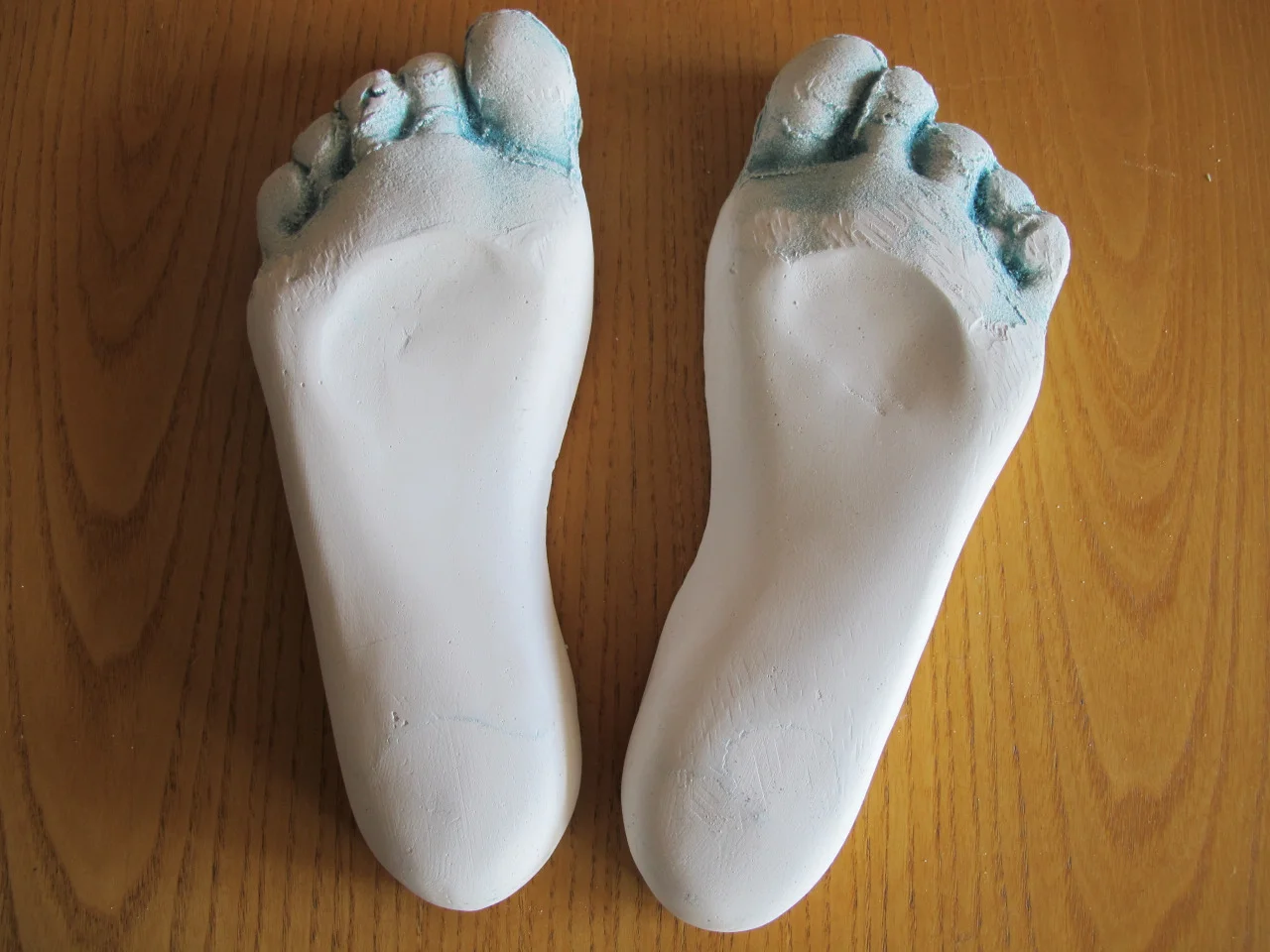I was reminded again yesterday, after yet another foot pain client came in to see me, that many do not understand the absolute and deeper ramifications of putting an orthotic into a shoe (and onto a foot) and what effects of doing so can have on changing a necessary adaptation.
This client had medial heel pain, not plantar heel pain, not the posterior calcaneal area, the medial edge (see photo). The edge where the inside/medial edge of the calcaneus/heel meets the ground. This client could reproduce the pain on palpation and could reproduce it if they stood up, and everted the heel just a tiny bit.
This client had a healthy appearing foot and arch. But, as often is the case, appearances are deceiving.
Here was the major problem:
- client had loss of terminal ankle dorsiflexion from prior fracture immobilization
- top end calf weakness * (see later)
- client had clear fatiguability of the anterior shin compartment muscles, and mild toe extensor weakness
- the client had high arched supportive orthotics
So, what is happening here, and often happens with the above limitations, the client does not have the muscular ability to maintain the arch sufficiently from the big players, as noted. In other words, the ankle has lost mobility and the foot has lost stability, a common pattern. To make up for a loss of ankle dorsiflexion we often collapse the arch a sufficient amount to pitch the talus medially and forward to help the tibia progress forward the requisite amount needed for forward locomotion across the foot-ankle complex. This is a normal compensation, and in time there may be a pathologic cost. This medial approach of the talus and arch collapse, requires calcaneal eversion. This eversion means more medial calcaneal loading into the shoe, orthotic or ground, including medial soft tissue (mostly fat pad) loading between the ground and the everting calcaneus.
This is a normal compensatory strategy to move forward over a restricted ankle dorsiflexion range. However, the doctor this client saw previously (for plantar fascitis), felt that this motion was a problem they needed to block with an orthotic. One that resisted the heel eversion and more than normal arch collapse/pronation cycle. This remedy resolved the plantar fascial pain. But, the medial heel pain began shortly thereafter.
So, here we have a client that is compensating, and finding a way (though there are biomechanical costs to this way), to get past a limitation, loss of ankle rocker in this case. But, the doctor put an orthotic in the shoe that stopped this "way". Now the client has to evert the heel even harder, because of the presence of the orthotic preventing it) and it is causing a "bite" or friction plus compression of the medial soft tissues.
So, this client now still cannot compensate well, in the manner they have attempted to do so, because of the orthotic. So, where are the loads going to go now ? Yes, some are being rammed into the medial aspect of the orthotic, but some are likely going to so elsewhere. Remember, the client is trying to progress their mass over and past the limited ankle rocker, and more pronation was their strategy. But, the orthotic is preventing that. So, the loads are very likely going to move up the chain (because the orthotic is muting loads down into the foot).
______
Me: "Oh, wait, "Mr. Jones", didn't you say you were just recently beginning to have some posterior knee pain ? Let me tell you why you are hyperextending your knee a little more than normal and taxing out your gastrocneumius.* One way you can progress forward, if you cannot do it through ankle rocker, is to extend your knee a little by contracting your quadriceps a small amount at midstance. Lets discuss why the orthotic is not helping you, not solving your problem, and creating some new issues for you. Then lets get down to fixing the root problem."
Some things to think about. Orthotics are not bad, but the user has to know when they are a device to help a client progress through a problem, and when they are inappropriate. Not all increased pronation is bad, particularly when it helps a client get through a problem. But, fix the root problem, and then help them regain proper amounts of pronation.
Oh, and one more thing, all you "drive more ankle rocker and dorsiflexion" people out there. Are you driving more ankle dorsiflexion, or are you merely pressing the talus into more medial posturing, plantarflexion and adduction? These are the talar motions in pronation. And when you pronate, you get more ankle rocker, faked out ankle rocker. So, are you truly helping your client get more ankle rocker and dorsiflexion ? Is this increased pronation what they are doing during their squats, to "apparently" get enough ankle rocker/dorsiflexion? Be careful all those new found ankle rocker mobility drills are not just making your client pronate more than normal. We know it happens, we see all the time. Loss of ankle mobility and loss of foot stability are often a paired phenomenon, they are trying to talk to you and tell you to treat the root cause.
-Dr. Allen, one of the gait guys
































